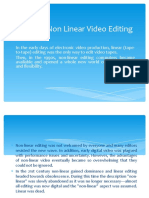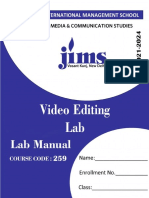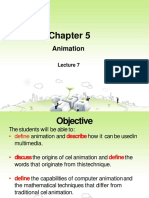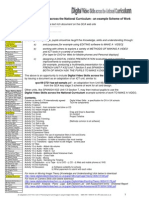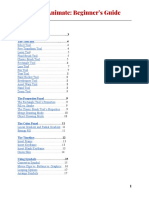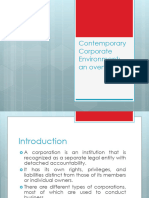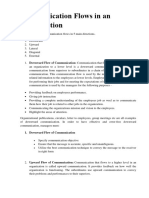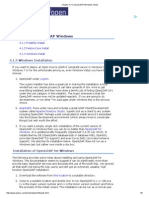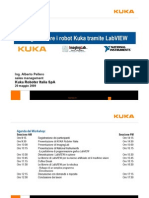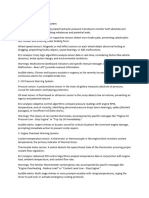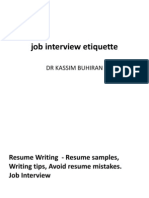VIDEO EDITING
UNIT 1
Question: What is Video Editing?
Video editing is the process of manipulating and rearranging video shots to create a new work.
Editing is usually considered to be one part of the post production process — other post-
production tasks include titling, colour correction, sound mixing, etc.
Many people use the term editing to describe all their post-production work, especially in non-
professional situations. Whether or not you choose to be picky about terminology is up to you.
We are reasonably liberal with our terminology and we use the word editing to mean any of the
following:
Rearranging, adding and/or removing sections of video clips and/or audio clips.
Applying colour correction, filters and other enhancements.
Creating transitions between clips
Importance of Video Editing
● A good video, whether it be a music video, marketing campaign video,
corporate video, or anything else, must follow 3 important stages Pre-
production Production Post-production
● Video editing is important because it is the key to blending images and sounds to
make us feel emotionally connected and sometimes truly there in the film we’re
watching. It’s a safe assumption to say that video editing is among the most
important jobs in the film industry. With professional video editing you can
create an emotion-evoking masterpiece, and it can make or break your film,
which is why it’s just as important to choose the right video editor as it is to
choose the right camera equipment.
● Editing, at its most basic, can help you put all your shots into the proper
sequence. You use editing tools to weed out or fix any mistakes made during
the production process. It can be used to trim the video to the length you
want and it can also be used communicate the right aesthetic to the
audience.
�Question: What are the Goals of Editing? Or Objective of VE
There are many reasons to edit a video and your editing approach will depend on the
desired outcome. Before you begin you must clearly define your editing goals, which
could include any of the following:
1) Remove unwanted footage
This is the simplest and most common task in editing. Many videos can be
dramatically improved by simply getting rid of the flawed or unwanted bits.
2) Choose the best footage
It is common to shoot far more footage than you actually need and choose only
the best material for the final edit. Often you will shoot several versions (takes) of
a shot and choose the best one when editing.
3) Create a flow
Most videos serve a purpose such as telling a story or providing information.
Editing is a crucial step in making sure the video flows in a way which achieves
this goal.
4) Add effects, graphics, music, etc
This is often the "wow" part of editing. You can improve most videos (and have a
lot of fun) by adding extra elements.
5) Alter the style, pace or mood of the video
A good editor will be able to create subtle mood prompts in a video. Techniques
such as mood music and visual effects can influence how the audience will react.
6) Give the video a particular "angle"
Video can be tailored to support a particular viewpoint, impart a message or serve
an agenda.
Question: What are the Different Types of Video Editing
There are several different ways to edit video and each method has its pros and cons. Although
most editors opt for digital non-linear editing for most projects, it makes sense to have an
understanding of how each method works.
This provides a very brief overview of each method.
1. Film Splicing
� Technically this isn't video editing, it's film editing. But it is worth a mention as it was the first
way to edit moving pictures and conceptually it forms the basis of all video editing.
Traditionally, film is edited by cutting sections of the film and rearranging or discarding them.
The process is very straightforward and mechanical. In theory a film could be edited with a pair
of scissors and some splicing tape, although in reality a splicing machine is the only practical
solution. A splicing machine allows film footage to be lined up and held in place while it is cut
or spliced together.
2. Tape to Tape (Linear)
Linear editing was the original method of editing electronic video tapes, before editing
computers became available in the 1990s. Although it is no longer the preferred option, it is still
used in some situations.
In linear editing, video is selectively copied from one tape to another. It requires at least two
video machines connected together — one acts as the source and the other is the recorder. The
basic procedure is quite simple:
1. Place the video to be edited in the source machine and a blank tape in the recorder.
2. Press play on the source machine and record on the recorder.
The idea is to record only those parts of the source tape you want to keep. In this way desired
footage is copied in the correct order from the original tape to a new tape. The new tape becomes
the edited version.
This method of editing is called "linear" because it must be done in a linear fashion; that is,
starting with the first shot and working through to the last shot. If the editor changes their mind
or notices a mistake, it is almost impossible to go back and re-edit an earlier part of the video.
However, with a little practice, linear editing is relatively simple and trouble-free.
3. Digital/Computer (Non-linear)
In this method, video footage is recorded (captured) onto a computer hard drive and then edited
using specialized software. Once the editing is complete, the finished product is recorded back to
tape or optical disk.
Non-linear editing has many significant advantages over linear editing. Most notably, it is a very
flexible method which allows you to make changes to any part of the video at any time. This is
why it's called "non-linear" — because you don't have to edit in a linear fashion.
One of the most difficult aspects of non-linear digital video is the array of hardware and software
options available. There are also several common video standards which are incompatible with
each other, and setting up a robust editing system can be a challenge.
The effort is worth it. Although non-linear editing is more difficult to learn than linear, once you
have mastered the basics you will be able to do much more, much faster.
� 4. Live Editing
In some situations multiple cameras and other video sources are routed through a central mixing
console and edited in real time. Live television coverage is an example of live editing.
Live editing is a fairly specialist topic and won't concern most people.
Question: History of Video Editing
● 1895 – Lumiere Brothers invented Cinematographe. Cinematographe was a three-in-
one device that recorded, captured and projected motion picture.
● 1898 - British film pioneer Robert W. Paul's Come Along, Do!, made in 1898 and one of
the first films to feature more than one shot.
● 1903 – The Great Train Robbery, written, produced and directed by Edwin S. Porter,
used a number of innovative techniques including cross cutting, double exposure
composite editing and camera movement.
● 1915 - David Wark Griffith, considered to be the father of narrative cinema, invented
some techniques like parallel editing, pushing them to higher levels of complexity and
depth. His film ‘The Birth of a Nation’ had spatial continuity, 180 degree rule,
establishing shot and reverse shot.
● 1920 - Russian director Lev Kuleshov from Russia Introduced cross cutting and theory of
Montage in editing.
● 1987: Avid Technology created the Avid/1 Media Composer.
● 1991: Adobe released Premiere 1.0 for the Mac
● 1996: The English Patient was the first digitally edited film to win an Oscar for Best
Editing (edited by Walter Murch on the Avid).
● 1999: Apple released Final Cut Pro, which soon became a chief competitor to Avid.
� Video Editing Terminology
1. Capture Device: A hardware or firmware device used to convert analogue video into
digital video.
2. Compressors & Codecs: Software or firmware used to compress and decompress digital
video. Compression makes the file size smaller.
3. Editing: The process of rearranging, adding and/or removing sections of video clips.
Also, creating transitions between clips. Editing is part of post-production.
4. Encoding: The process of converting digital video into a particular format, for example,
saving a video project in MGEG-2 format for DVD distribution.
5. Layering: Adding multiple layers of superimposed video.
6. Linear Editing: Also known as tape to tape editing. A method of editing in which
footage is copied from one tape to another in the required order.
7. Non Linear Editing: An editing method which uses computer software to edit the
footage
8. Transition: The way one shot changes to the next.
9. Post Production: Everything that happens to the video and audio after production, i.e.
after the footage has been shot. Post production includes video editing, audio editing,
titling, colour correction, effects, etc.








